Mostly Mute Monday: The Double-Jet Death of Sun-like Stars
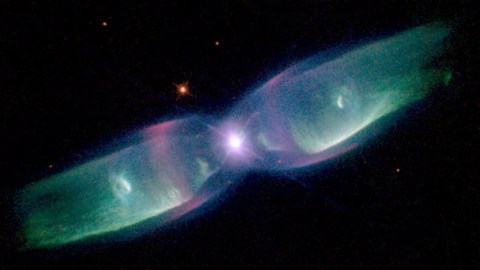
Occasionally, a star will blow off its outer layers in a sphere. The vast majority don’t, and ours probably won’t, either.
“The self-same atoms which, chaotically dispersed, made the nebula, now, jammed and temporarily caught in peculiar positions, form our brains; and the ‘evolution’ of brains, if understood, would be simply the account of how the atoms came to be so caught and jammed.” –William James
When stars like our Sun, between 40% and ~800% of our mass, run out of hydrogen in their core, they start to die.
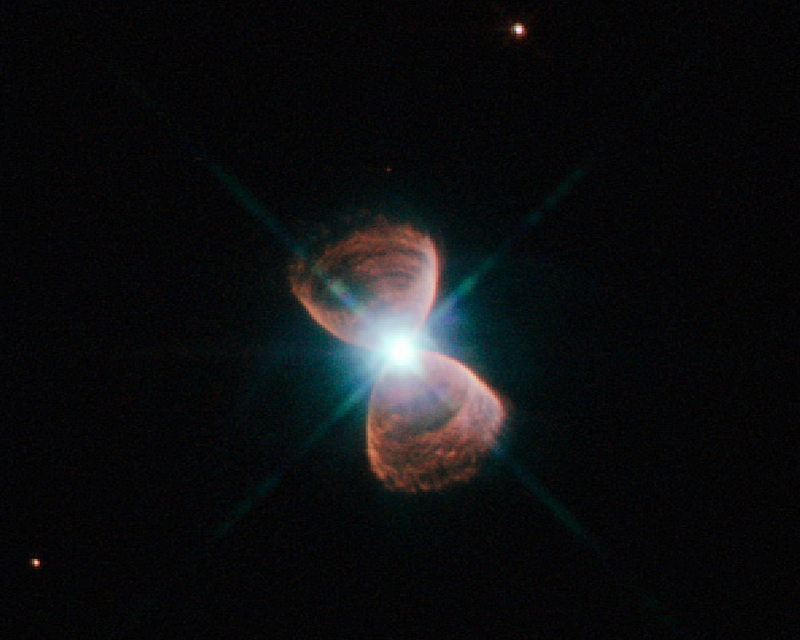
The core contracts and heats up, causing the outer layers to expand as the star becomes a helium-burning red giant.
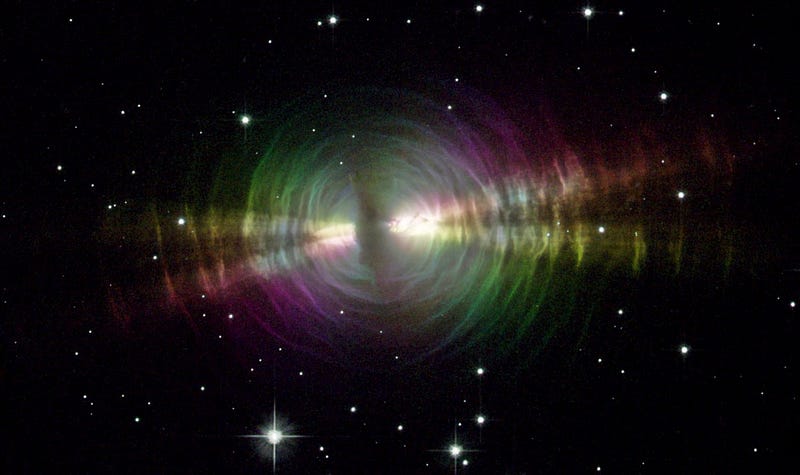
The intense stellar winds produced gently blow off the star’s outer layers.
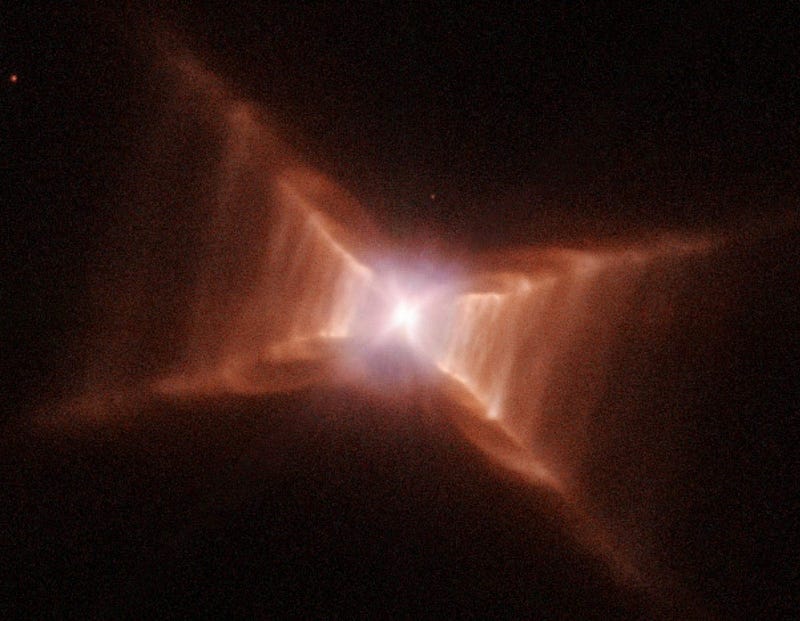
When the core runs out of helium to burn, the central region contracts to a white dwarf, producing intense ultraviolet light.
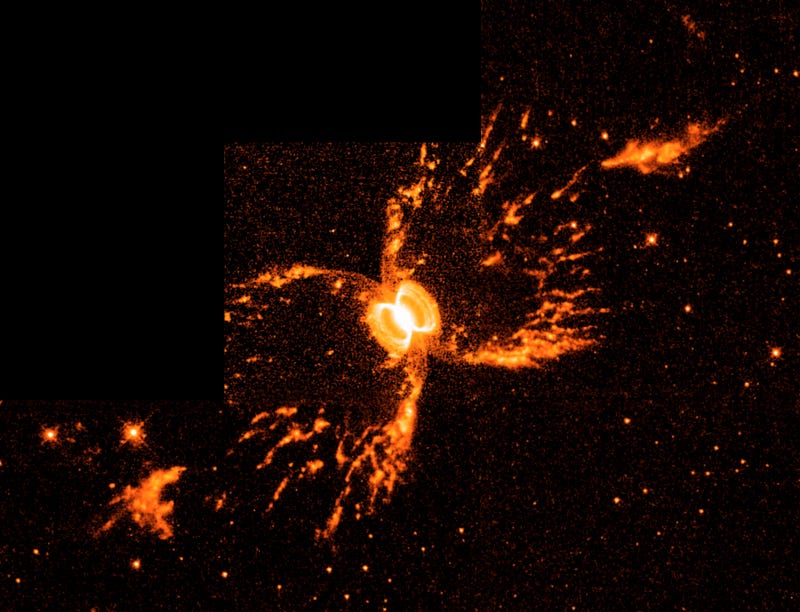
This light ionizes the atoms that had previously been blown off. As the electrons recombine with their ions, they emit light of various wavelengths.
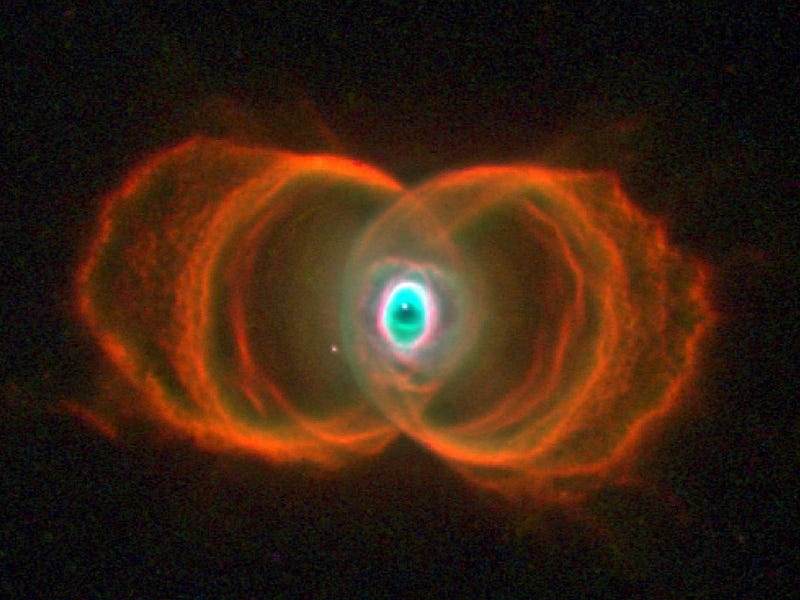
Hydrogen tends to glow red, while oxygen, sulphur, sodium, carbon and nitrogen cover the greens, blues and yellows when shown in true color.
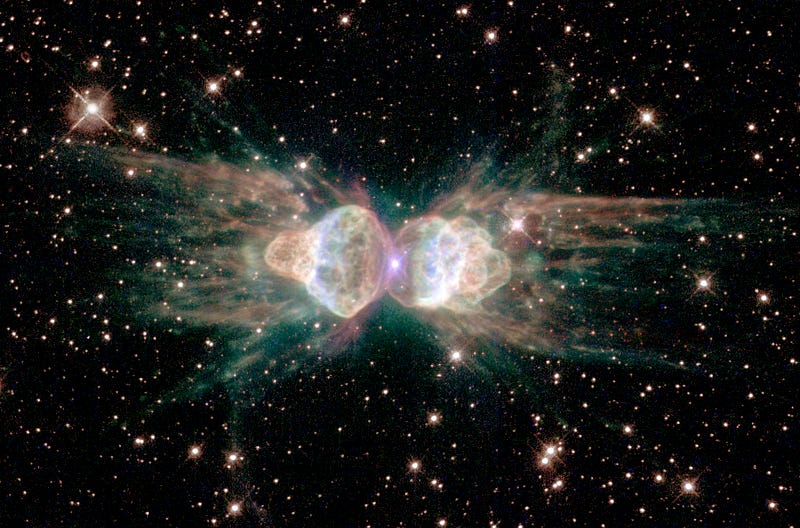
Some 80% of planetary nebulae are asymmetrical, with the vast majority of those showing a bipolar form.
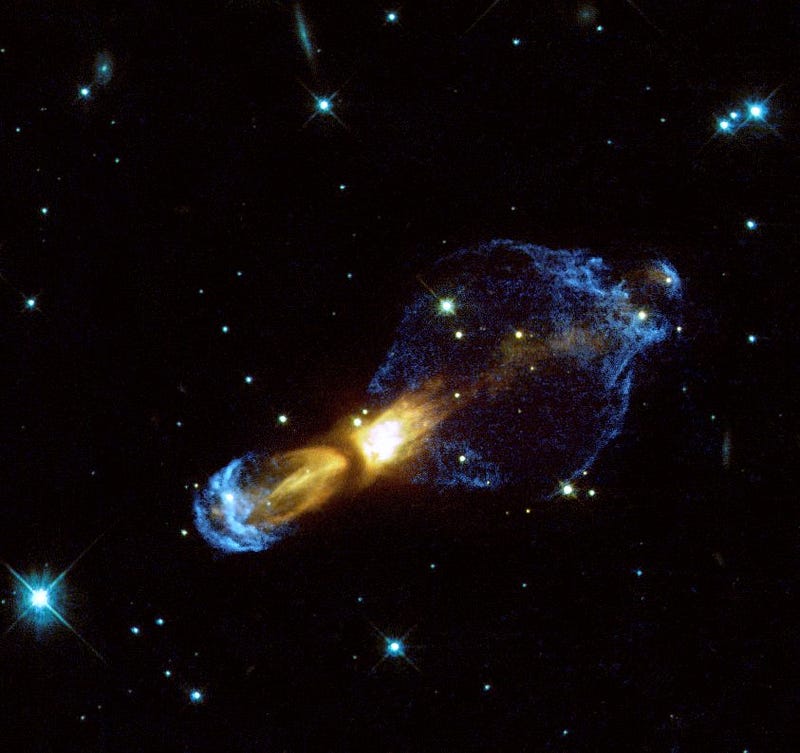
These twin jets emerge along the parent star’s rotational axis, where streams of material most likely flow outwards and collide with previously blown-off stellar layers.
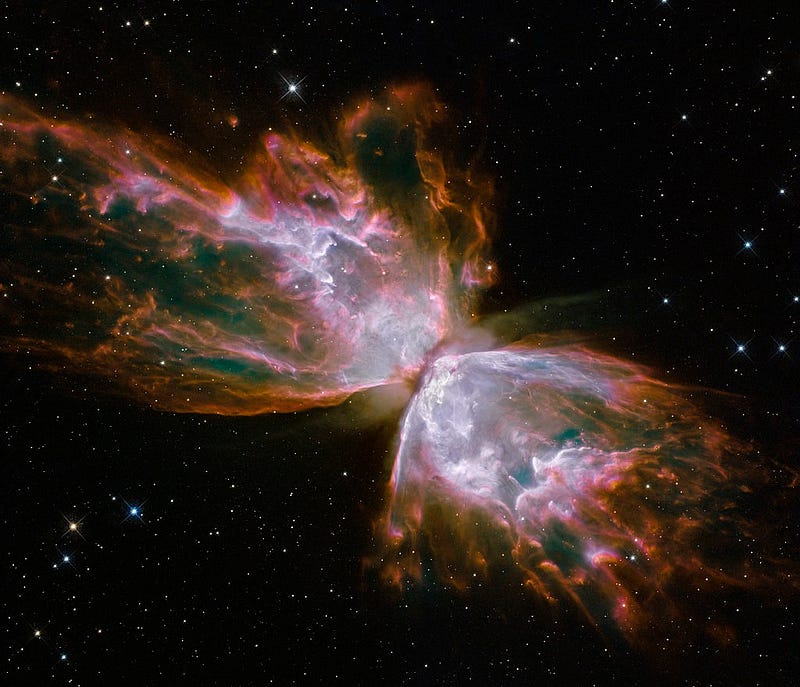
Observations of active nebulae show that ~10 lunar masses worth of material are ejected each year, at speeds reaching 5% the speed of light.
Mostly Mute Monday tells the story of a single astronomical phenomenon or object primarily in visuals, with no more than 200 words of text.
This post first appeared at Forbes, and is brought to you ad-free by our Patreon supporters. Comment on our forum, & buy our first book: Beyond The Galaxy!





